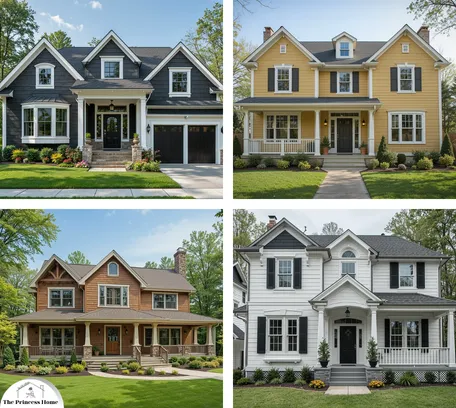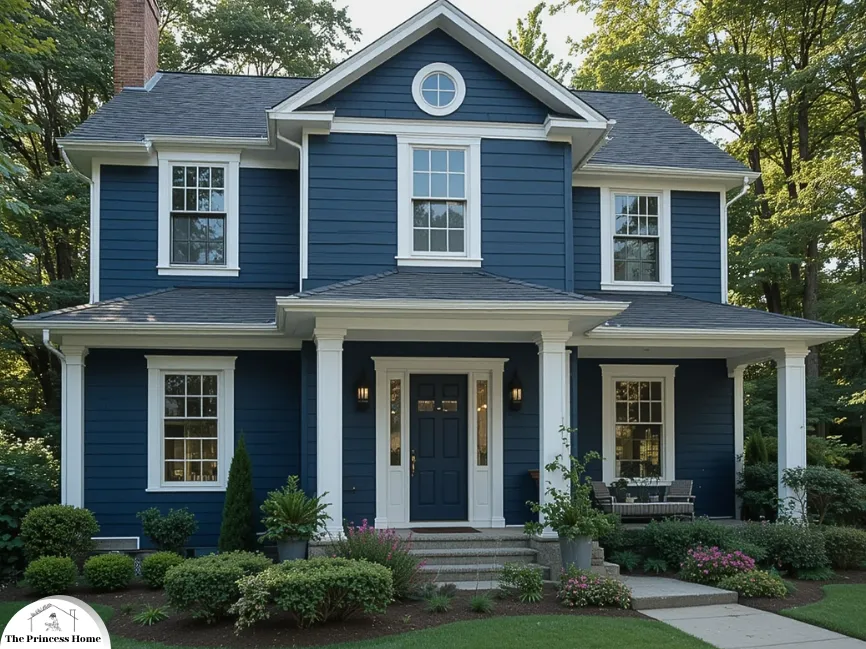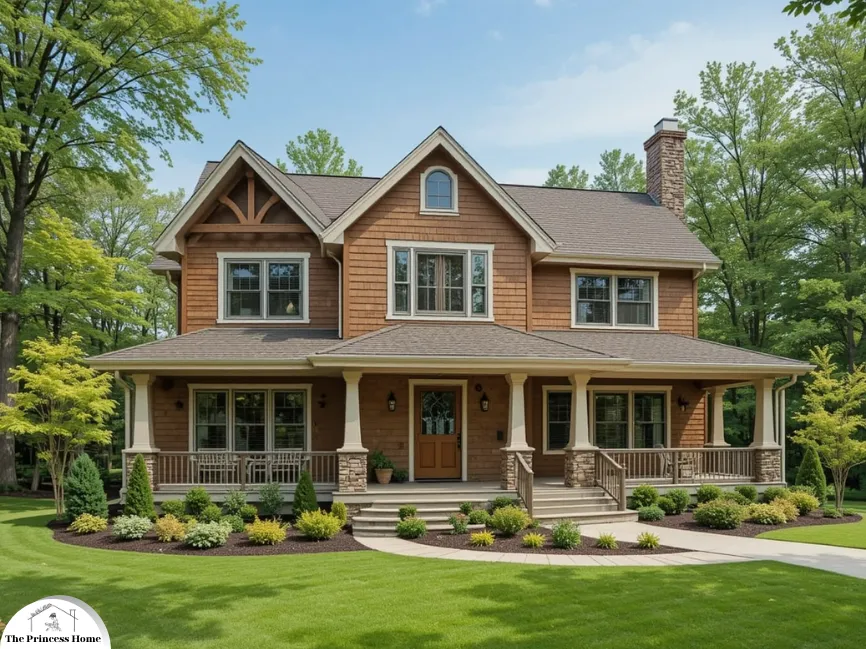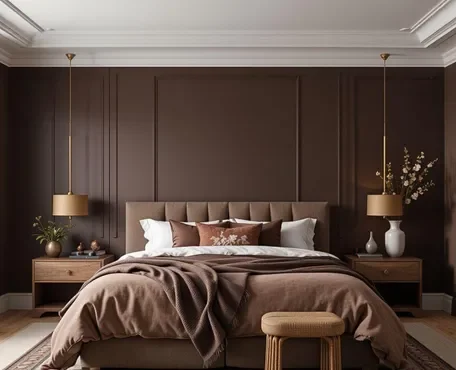

Exterior Home Painting Colors 2025: A Comprehensive Approach
As we look forward to the upcoming year, the choice of exterior home painting colors becomes pivotal in defining the aesthetic appeal and ambiance of our living spaces. Whether you’re planning a complete makeover or a subtle refresh, selecting the right colors can significantly enhance curb appeal and complement your home’s architectural style.
Here’s a detailed exploration of the trends and considerations for exterior home painting colors in 2025.

1. Classic Neutrals with a Twist
Soft Greys
Shades like dove grey and pearl grey continue to dominate, offering a sophisticated backdrop that pairs well with both modern and traditional architectural styles. These soft grey shades create a serene, timeless appeal, making them perfect for homeowners looking to add elegance to their exterior. Complementing these hues with contrasting trim in whites or darker tones enhances the overall curb appeal.

Warm Whites
Creamy whites with hints of beige or ivory add warmth and elegance, reflecting natural light beautifully while providing a welcoming exterior.This soft, neutral palette works well with a variety of landscaping styles, from lush greenery to vibrant flower beds. It exudes a classic charm that enhances both contemporary and traditional homes, making it a versatile choice for any architectural design.

2.Bold and Modern Statements
Deep Blues
Navy and indigo tones make a bold statement, evoking a sense of tranquility and sophistication. Ideal for accentuating trim or creating a striking focal point.These deep blues add depth and drama, offering a rich contrast to lighter shades or natural wood elements. Paired with warm neutrals or metallic accents, they create a timeless yet modern look that stands out while maintaining elegance.

Rich Greens
From emerald to forest green, these shades connect your home with nature, offering a fresh and vibrant look that stands out while harmonizing with surrounding foliage.Rich greens evoke a sense of calm and balance, making them perfect for homes surrounded by gardens or wooded landscapes. These tones work beautifully with natural stone, wood accents, or gold hardware, creating a seamless blend of sophistication and earthy charm.

3.Rustic Charm and Natural Tones
Earthy Reds
Terracotta and clay-inspired hues add a touch of warmth and Mediterranean flair, perfect for homes aiming to capture a rustic, sun-soaked appeal.These earthy reds create a cozy, inviting atmosphere, making them ideal for both modern rustic and traditional homes. Paired with stone or wood details, they evoke a sense of timelessness while bringing a bold, sun-kissed energy to your exterior.

Muted Yellows
Soft ochre and mustard tones lend a cheerful vibe, reminiscent of sunlit fields and creating a welcoming facade.These muted yellows evoke warmth and positivity, offering a soft, subtle pop of color that brightens the exterior without overwhelming. They pair well with natural materials like wood and stone, creating a harmonious balance of light and texture.

4.Modern Farmhouse &Contemporary Trends
Black and White Contrasts
Timeless and sophisticated, black and white combinations offer a crisp, clean look that highlights architectural details and creates a striking visual impact. This classic pairing emphasizes bold lines and contrasts, making it ideal for both modern and traditional homes. The high contrast enhances curb appeal, while the simplicity of the palette ensures a refined, elegant exterior that never goes out of style.

Monochromatic Schemes
Shades of grey or taupe in varying intensities provide a modern aesthetic, allowing for subtle variation while maintaining a cohesive and minimalist appearance. Monochromatic schemes offer a sleek, sophisticated look that emphasizes clean lines and architectural features. By layering different shades of one color, these schemes create depth and interest, making them ideal for contemporary homes seeking a polished, understated exterior.

5.Sustainable and Eco-Friendly Choices
Natural Wood Tones
Opting for stains that enhance and protect natural wood siding preserves the material’s integrity while reducing environmental impact. Choosing low-VOC paints improves indoor and outdoor air quality, supporting sustainability without limiting color choices.

6.Tips for Choosing the Right Colors
Consider Architectural Features
Highlight unique architectural elements such as trim, shutters, and doors with complementary or contrasting colors to create visual interest. Using different colors for architectural features allows these details to stand out, enhancing the overall design of the home. Contrasting colors on shutters or doors can create a focal point, while complementary tones provide balance and harmony, accentuating the home’s character.

Evaluate Lighting Conditions
Test colors in various lighting conditions to ensure they maintain their desired appearance throughout the day. Colors can appear differently depending on natural and artificial lighting, so it’s important to observe how they look in both direct sunlight and shaded areas. Testing in different times of the day will help ensure the hues stay true to your vision, maintaining their richness and vibrancy in all conditions.

Neighborhood Harmony
While expressing individuality is important, consider the overall aesthetic of your neighborhood to ensure your home blends harmoniously. Balancing personal style with the neighborhood’s character creates a cohesive look that complements surrounding homes. Subtle variations in color or design can showcase individuality while still respecting the established aesthetic, ensuring your home stands out without clashing with its surroundings.
Conclusion
Selecting exterior home painting colors for 2025 involves a blend of personal style preferences, architectural considerations, and environmental awareness. Whether you opt for timeless neutrals, bold accents, or earthy tones, each choice contributes to the overall character and charm of your home’s exterior. By staying informed about current trends and thoughtful in your selection process, you can achieve a stunning transformation that enhances curb appeal and reflects your unique sense of style.
Here are some frequently asked questions related to the article :
1. How often should I paint the exterior of my home?
The frequency of exterior painting depends on the material and climate: Wood siding every 5-7 years, stucco every 5-6 years, brick every 10-15 years (if painted), and metal siding every 5-10 years. Regular inspections help determine when repainting is needed.
2. What is the best time of year to paint the exterior of my home?
The ideal time for exterior painting is during spring or fall when temperatures are moderate (50°F to 85°F) and humidity is low. Avoid painting in extreme heat, cold, or rainy conditions, as these can affect paint adhesion and drying.
3. How do I choose the right paint color for my home?
Consider the following tips: Choose colors that complement your home’s architectural style and fit within your neighborhood’s aesthetics. In 2025, neutral tones, earthy hues, and bold accents are popular. Test samples on small sections to see how the color looks in different lighting conditions.
4. Can I paint over old paint?
Yes, but only if the existing paint is in good condition. If the old paint is peeling, cracking, or chipping, it must be removed or sanded before applying a new coat. Always clean and prime the surface for better adhesion.
5. What is the difference between latex and oil-based paint?
Latex paint is water-based, easy to clean, dries quickly, and is more eco-friendly, making it ideal for most exterior surfaces. Oil-based paint provides a smoother finish and greater durability but takes longer to dry and has a stronger odor, making it best for trim and doors.
6. How do I prepare my home for exterior painting?
Proper preparation is key: Clean the surface by removing dirt, mold, and mildew with a pressure washer or scrub brush. Repair damage by filling cracks, holes, and sanding rough areas. Apply a primer to ensure better paint adhesion and coverage. Protect surroundings by covering plants, windows, and trim with drop cloths and painter’s tape.
7. Should I hire a professional or paint the exterior myself?
It depends on your budget, time, and skill level: DIY is cost-effective but time-consuming and physically demanding, making it best for smaller homes or those with painting experience. Hiring a professional ensures high-quality results, saves time, and is ideal for larger or more complex projects.
8. How much does exterior home painting cost in 2025?
Costs vary based on home size, paint quality, and labor. Larger homes require more paint and labor, while high-quality paints cost more but last longer. Professional painters charge by the hour or project. On average, exterior painting costs between $2,000 and $6,000, depending on these factors.
9. What are low-VOC paints, and why should I use them?
Low-VOC (volatile organic compounds) paints contain fewer harmful chemicals, making them safer for your family and the environment. They reduce indoor and outdoor air pollution and are a popular choice in 2025 for eco-conscious homeowners.
10. How long does exterior paint take to dry?
Drying times depend on paint type and weather conditions: Latex paint dries to the touch in 1-2 hours and can be recoated in 4-6 hours, while oil-based paint takes 6-8 hours to dry and 24 hours before recoating. Full curing takes 2-4 weeks, so avoid washing or scrubbing during this period.



